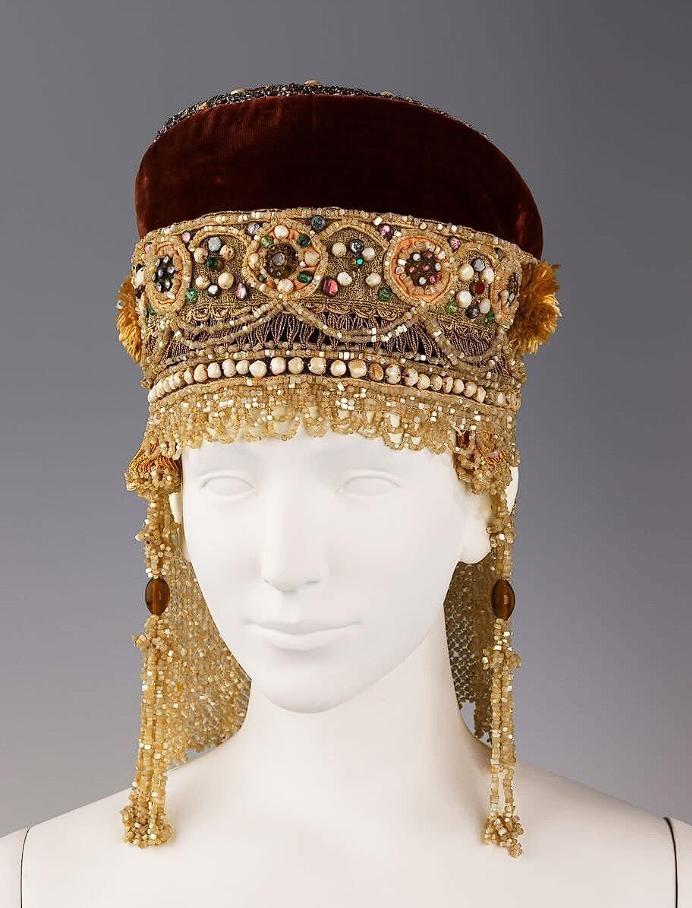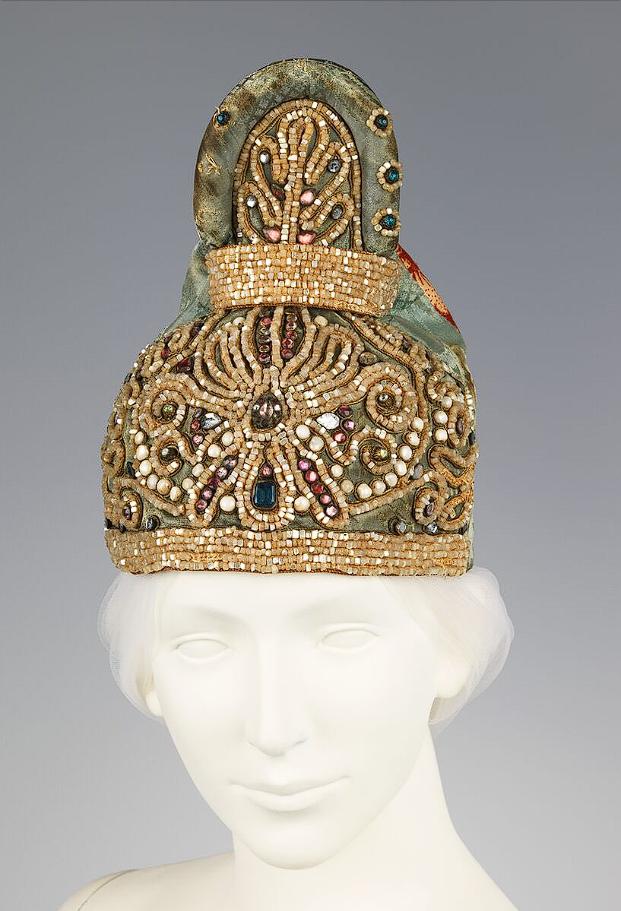Russian Folk Headdresses: A Vanishing Art Preserved by Natalia de Shabelsky
A Crown of Silk, Pearls, and Memory
They shimmer like artifacts from a lost fairy tale—headdresses adorned with silk threads, luminous pearls, fragments of mother-of-pearl, and delicate goldwork.
To the modern viewer, they’re works of breathtaking beauty. But for the women of rural Russia, these kokoshniks were much more than ornaments. They were living emblems of status, belief, and belonging.
Today, these pieces are preserved behind museum glass in places like the Hermitage Museum in St. Petersburg and the Museum of Fine Arts in Boston. But their survival is thanks to one woman’s passion for memory.
The Woman Who Preserved a Vanishing World
Natalia de Shabelsky was born in 1841 into the Russian aristocracy.
She wasn’t a fashionista or a trend chaser—she was a visionary. In the 1870s, as industrialization began to erode traditional peasant life, she made a decision that would shape her legacy.
She began collecting. Not fine art or jewelry, but something far more fragile: the textile creations of Russia’s rural communities.
Where others saw quaint costumes, Shabelsky saw cultural treasure. She traveled across Great Russia, visiting villages and remote estates, gathering embroidered shirts, festive robes, and headdresses so intricate they seemed to defy time.
Every Stitch Tells a Story
What Shabelsky collected wasn’t simply clothing—it was identity.
Each headdress reflected not only a region or era, but a woman’s stage in life. Bridal crowns sparkled with pearls and polished stones. Others, lighter and more modest, were worn by unmarried girls or older widows during religious festivals.
Every material had meaning. Gold thread denoted wealth. Red embroidery was a protective symbol. Mother-of-pearl shimmered like frozen light, believed to carry spiritual significance.
In a world without mass production, every piece was handmade. Passed down from mothers to daughters. Reinvented, but never disconnected from tradition.
From Russia to the World
By the end of the 19th century, Shabelsky’s private collection had grown into one of the most important archives of folk art in Russia.
But in 1902, political and personal changes led her to move to France. She died just a few years later, but not before ensuring her collection would live on.
Today, her pieces are divided among major institutions, including the Hermitage and the MFA Boston. Visitors still marvel at the craftsmanship—but many don’t realize the depth of history behind the sparkle.
A Legacy in Thread and Gold
Natalia de Shabelsky didn’t just save clothing.
She preserved a language spoken in patterns, in textures, in color combinations. A language created not by scholars or kings—but by peasant women, working by lamplight, weaving their lives into silk and wool.
In an age of fast fashion and fleeting trends, these headdresses stand as quiet monuments.
They remind us that true artistry is built by hands, bound by memory, and carried forward by those who care enough to remember.

CÁC TIN KHÁC
Mary Walton: The Forgotten Inventor Who Helped Clean Up America’s Cities
Tomb of Queen Nefertari in the Valley of the Queens, Egypt
Discover the Hypostyle Hall of the Temple of Hathor at Dendera
Venus de Losange: Unveiling the Mystery of a 20,000-Year-Old Paleolithic Icon